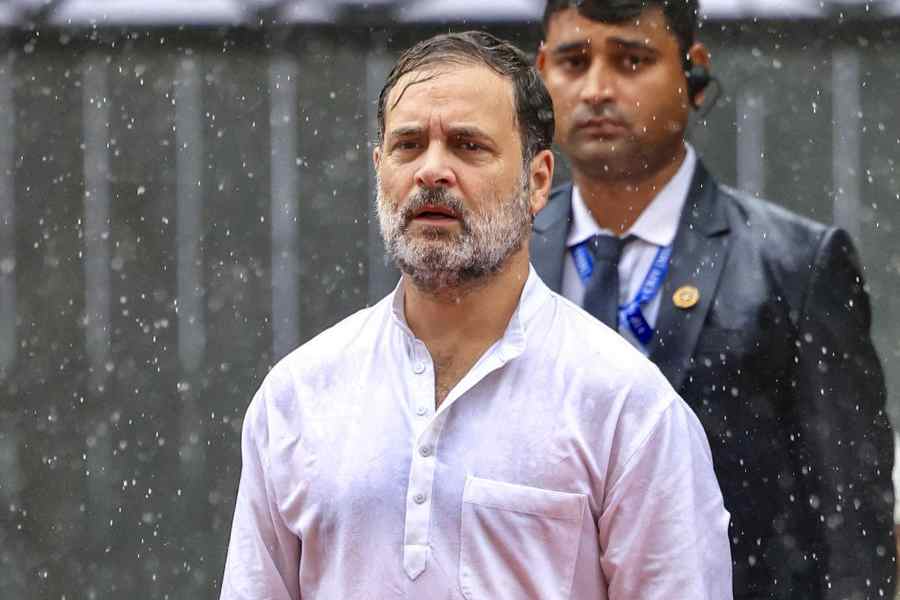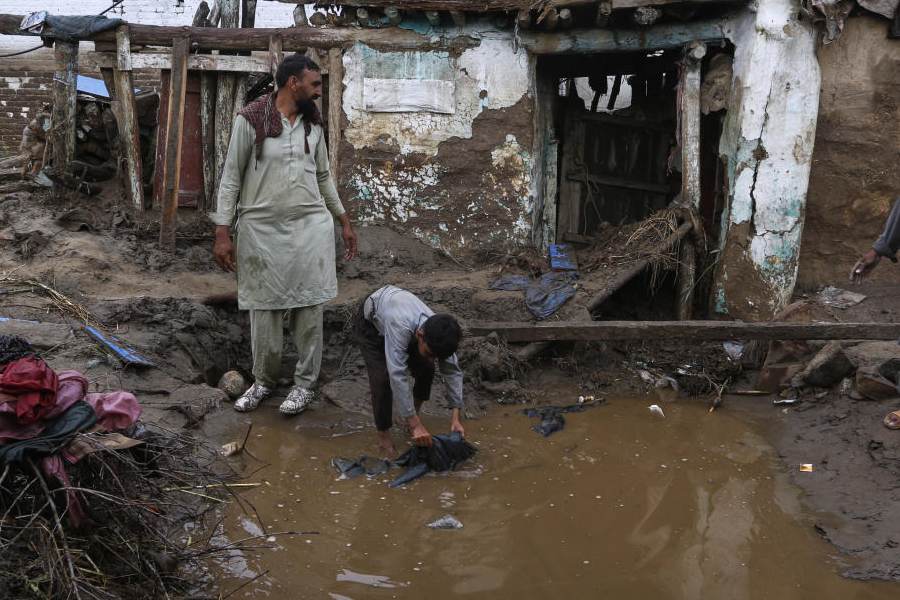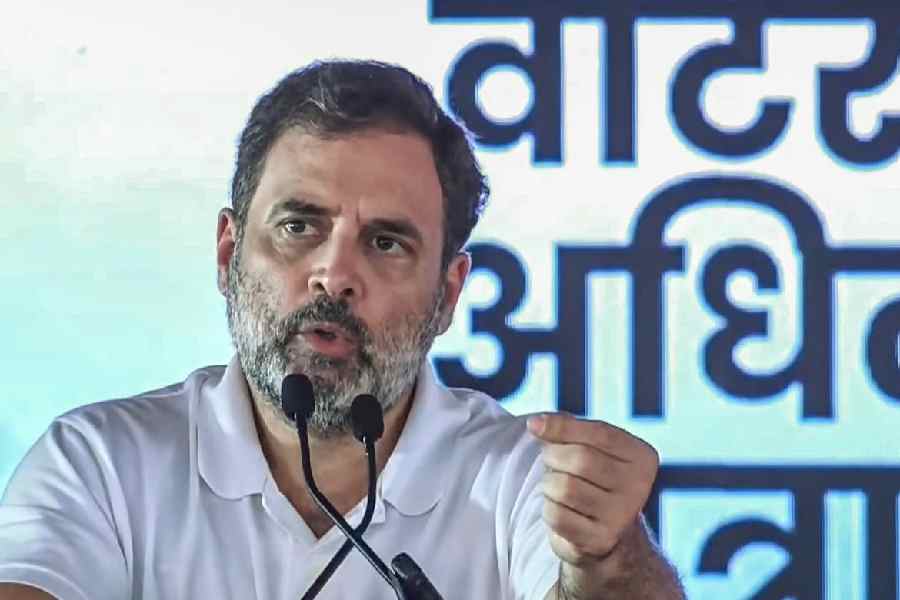 |
The hottest chilli in the market isn’t one that scalds your tongue as much as it burns a hole in your budget with a price spike triggered by a cocktail of factors ranging from lower production to lazy monitoring.
The political uproar over the sudden spurt in the price of green chilli — Monday’s market price of Rs 200 a kg was almost 200 per cent more than the previous peak — has forced Mamata Banerjee to set up a committee that might be able to only temporarily bring down the rate.
Metro spoke to farmers and traders over the last two days to discover a supply chain riddled with anomalies that can trigger price rise at the drop of a sack.
Seasonality of crop
Barring the period between April and May, Bengal is self-sufficient in production of green chilli, cultivated across pockets of Haldibari in Cooch Behar, Basirhat in North 24-Parganas, Beldanga in Murshidabad and Canning in South 24-Parganas.
“During the lean period, nearly 60 per cent of the demand is met through supply from external markets like Katihar, Varanasi and Ranchi, besides Haldibari,” said Kamal Dey, the working president of the West Bengal Vendors’ Association.
This season, production of green chilli in the districts was hit by lack of adequate rainfall. Varanasi or Ranchi couldn’t supply stock either. “Chilli produced in Haldibari accounted for just 20 per cent of the requirement,” Dey said.
Production also suffered because many farmers who had grown chilli last year shied away from cultivating the crop this season fearing a glut like last year that had dragged down the price.
“This year, summer was hotter than usual. Chilli saplings planted in March did start flowering but wilted for want of rain. The Nor’westers played truant and our crop suffered,” said Sahid Mullick, a chilli farmer at Kholapata in Basirhat, North 24-Parganas.
With monsoon playing catch-up, many in his village have started planting fresh saplings. So have their counterparts in Murshidabad.
“The yield from these zones would start reaching the market not before a month. It takes around seven to eight days for a flower to develop into a chilli. Till then, the price is likely to remain high,” a trader said.
Artificial shortage
If weather spoilt the crop and economic reasoning took away the incentives for farmers to grow chilli, veterans in the market saw an opportunity to use the situation to make a killing.
An insider in the green chilli market said a section of wholesalers created an artificial shortage by “manipulating” supply of chilli to the main city markets that receive produce from Nadia, North and South 24-Parganas and Cooch Behar.
Bulk buyers start gathering in these markets early in the morning or late in the night, depending on the expected arrival of trucks laden with chilli. “Some wholesalers bribe the truck drivers to reach a bit later than the usual auction time, causing an artificial stock shortage that helps them raise the price,” said a wholesaler dealing in green chilli since 1992.
If all the trucks arrive more or less together — including those from Bihar and Karnataka — prices tend to fall. “So the big players often manipulate the timing of the arrivals,” said Bijoy Prasad Shaw, a green chilli stockist.
Variations in the price of green chilli at Koley Market through Monday explained the stock market-like fluctuations. “At 10am on Monday, one palla (5kg ) of green chilli sold for Rs 550. The price dropped to Rs 450 between 5.30 and 6pm and increased to Rs 500 around midnight. Around 4am on Tuesday, the price came down to Rs 350,” said a market observer.
Wholesaler hegemony
Across most wholesale markets, the stockists and big-time retailers form a cartel that determines the price of green chilli over a period of time.
A cartel buys chilli at wholesale auctions and transports them by truck for sale in the retail markets. A sack contains around 40kg of chilli when packed at source. But nearly 15 per cent is lost — that’s mostly leaf — by the time it is unloaded in the market. Also, traders sometimes find it difficult to sell off the entire stock before the green chilli turns whitish or starts rotting.
“Wholesalers factor in all the market conditions and decide among themselves after an auction what the retail price of green chilli should be on a particular day. This is worked out in such a way that even if someone has bought the produce at a high price in the auction, he would not incur any loss,” said a trader.
“This cartel is so strong that during a particular period, the price they fix for retail markets may not have reflected that in the wholesale market.”
Lack of knowhow
Farmers in South 24-Parganas and Murshidabad say planting chilli on the same plot year after year is proving counter-productive. “When chilli cultivation is repeated, the yield could be up to 40 per cent less,” said Subrata Ghosh of the Haldibari Merchants’ Association.
Few farmers are able to do anything about it, though. “We have no clue why the plants sometimes die despite watering. Is it because of inadequate rainfall or something else, we do not really know. We don’t have the technical expertise to address the problem. We wish the government would help,” said Enam Ali of Canning.
Poor monitoring
In Basirhat, around 200 bigha of land is under green chilli cultivation. This year’s crop was a disaster and the agriculture department allegedly did little to turn things around.
“There was no effort by the agriculture department either to do a soil test or check the type of seeds and saplings that were being used in Basirhat,” said Abul Kalam Mondal of Basirhat Block II. “Besides, with the price of pesticides and fertilisers shooting up along with that of labour, many farmers who didn’t receive government loans didn’t even cultivate the crop.”
Monitoring has begun on Mamata Banerjee’s orders but it all seems a bit late in the day.
Would you buy chilli at Rs 200 a kg? Tell ttmetro@abpmail.com











